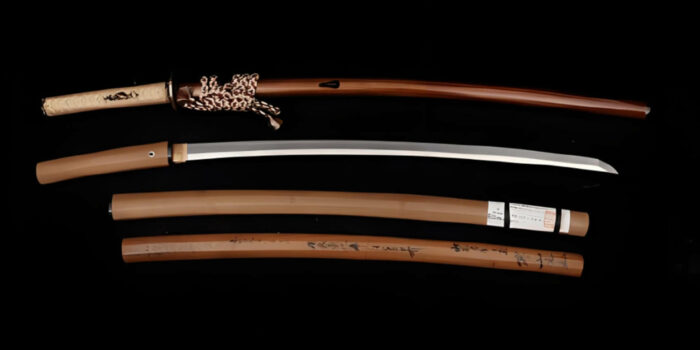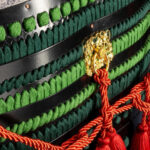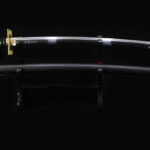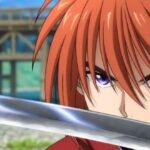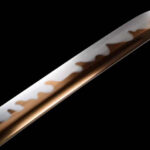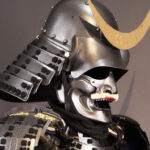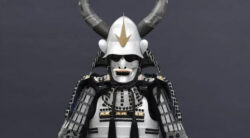The Honjo Masamune: Japan’s Most Famous Lost Sword
Japan’s rich tradition of sword-making has given rise to many legendary blades, but none are as renowned or mysterious as the Honjo Masamune. Known as the most famous lost sword from Japan, this iconic katana symbolizes the perfection of craftsmanship and the honor of the samurai. Today, it captivates historians, sword enthusiasts, and collectors, representing the height of Japanese swordsmithing.
What is the Honjo Masamune?
The Honjo Masamune is a legendary katana created by the master swordsmith Goro Nyudo Masamune. Revered as the greatest swordsmith in Japan, Masamune perfected the art of crafting real authentic katanas. His swords are celebrated for their remarkable balance of strength and sharpness, embodying the ideal qualities of the samurai sword.
Renowned for its stunning blade, the Honjo Masamune boasted a perfectly forged edge and a striking hamon (temper line). Each part of the katana—blade, tsuka (handle), tsuba (guard), and sword sheath—was meticulously crafted. The katana scabbard, often made of lacquered wood, added a touch of elegance, completing the weapon’s functional yet artistic design.
Historically, this katana played a significant role during the Sengoku period and later became a symbol of power for the Tokugawa Shogunate. Passed down through generations of the ruling family, the Honjo Masamune became one of the most important old samurai swords, embodying authority, tradition, and the Bushido spirit.
The Mysterious Disappearance of the Honjo Masamune
Despite its legendary status, the Honjo Masamune is now a lost sword, shrouded in mystery. After World War II, during Japan’s disarmament under Allied occupation, the Tokugawa family handed the katana over to U.S. forces. Unfortunately, the sword disappeared shortly after and has not been seen since.
Theories abound about its fate. Some believe it resides in a private collection, while others speculate it may have been mislabeled in a museum or, tragically, destroyed in the post-war chaos. Regardless of its current location, the Honjo Masamune’s disappearance has only added to its allure, cementing its place as the most famous lost sword from Japan.
Key Features of the Honjo Masamune
The Honjo Masamune stands out for several reasons:
Superior Craftsmanship: With a flawlessly forged blade and intricately designed katana scabbard, it exemplified the height of Japanese swordsmithing.
Historical Significance: As an heirloom of the Tokugawa Shogunate, it held immense symbolic and cultural value.
Embodiment of Samurai Culture: The sword symbolized the honor, resilience, and strength of the samurai.
Mystery and Legacy: Its disappearance has elevated it to legendary status, inspiring countless stories and theories.
Honoring the Art of Katana Crafting Today
While the Honjo Masamune is lost, its spirit endures in the art of modern swordsmithing. Today, master craftsmen replicate the traditional parts of the katana and use historical techniques to forge real authentic katanas.
Traditional Parts of a Katana
Every katana is a blend of form and function, with each component serving a purpose:
Blade (Nagasa): The heart of the katana, forged to achieve a perfect balance of sharpness and durability.
Tsuka (Handle): Wrapped in ray skin and silk or leather for a secure grip.
Tsuba (Guard): A decorative yet practical guard to protect the wielder’s hand.
Saya (Sword Sheath): A lacquered wood scabbard that preserves and protects the blade.
Modern artisans preserve these traditional designs, creating hand-forged katanas inspired by masterpieces like the Honjo Masamune.
COOLKATANA: Materials and Techniques for Modern Katanas
Contemporary swordsmiths use premium materials such as:
1095 High-Carbon Steel: Known for its sharpness and durability.
T10 Tool Steel: Perfect for crafting battle-ready swords.
Tamahagane Steel: The traditional Japanese steel prized for its strength and aesthetic beauty.
Techniques like folding steel, clay tempering, and meticulous polishing ensure today’s hand-forged katanas maintain the legacy of historical samurai swords.
Shop Now
coolkatana.com
https://www.coolkatana.com/
Cultural Impact of the Honjo Masamune
The Honjo Masamune’s legend transcends history, influencing modern culture in many ways:
Video Games: Appears as a legendary weapon in titles like Final Fantasy and Chrono Trigger.
Anime and Manga: Celebrated in samurai-themed stories, often depicted as the ultimate blade.
Movies: Inspires katana designs in films such as Kill Bill, where it symbolizes honor and mastery.
These depictions keep the story of the Honjo Masamune alive, inspiring a deep appreciation for Japanese sword-making.
Conclusion: Preserving the Legacy of the Honjo Masamune
The Honjo Masamune remains the most famous lost sword from Japan—a masterpiece of swordsmithing and a timeless symbol of samurai culture. While its fate remains unknown, its legacy inspires both modern craftsmanship and cultural narratives.
Owning a real authentic katana with a beautifully crafted sword sheath allows enthusiasts to connect with this rich tradition. Whether for martial arts, display, or collection, a hand-forged katana is a tribute to the art and history of Japan’s legendary swords.
katana:https://en.wikipedia.org/wiki/Katana
